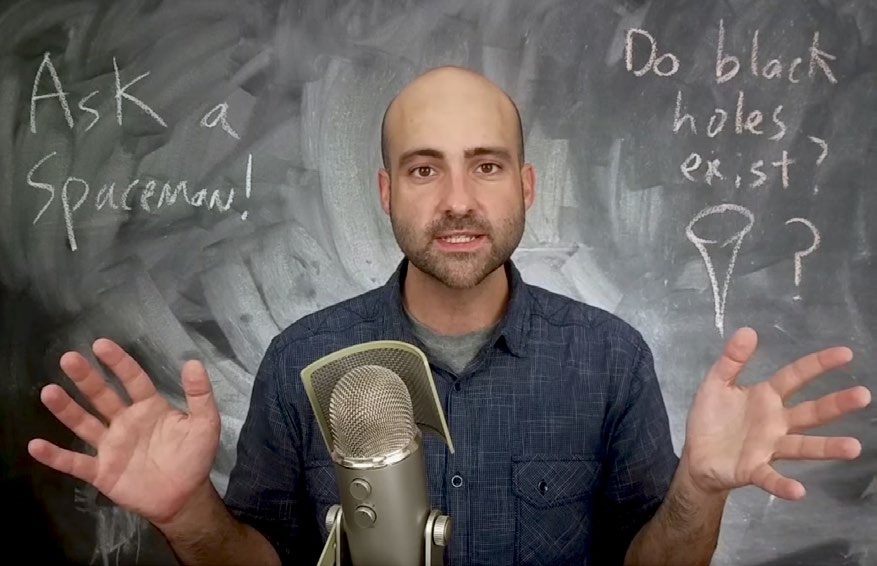'Ask a Spaceman' Takes a Closer Look at the Universe's 'Baby Picture'
This week's "Ask A Spaceman" episode explores the radiation echo of the Big Bang that formed our universe. While we can't see the radiation with our eyes, it surrounds us everywhere, according to Paul Sutter, astrophysicist and Space.com columnist.
"We know, as good as we can know things, that 13.8 billion years ago, the entire observable universe was — stay with me now — the size of a peach and had an observable temperature of a little over a trillion degrees," Sutter says in this week's video, Episode 3 of his ongoing series on Facebook Watch that is produced in partnership with Space.com. (To understand how we know the universe used to be that small, you'll have to look at last week's episode.)
After the Big Bang, the universe was extremely small, hot and dense, leading to a physics of extremes. Atoms — the basic building blocks of molecules — couldn't even form. The usual components of an atom, such as protons, neutrons and electrons, couldn't attach because high radiation knocked them apart, Sutter explains. So instead, the infant universe contained a superheated gas known as plasma. [The Universe: Big Bang to Now in 10 Easy Steps]
As the universe expanded, Sutter says, the plasma cooled and eventually — after 10,000 years, a mere fraction of our universe's history — atoms of hydrogen and helium formed. Soon, the universe became transparent to light. Yet the radiation of the universe's formation remained. Even as the universe expanded and evolved, that early radiation remained in the background.
Today, this radiation — the cosmic microwave background— is still visible, shining in microwave wavelengths at a temperature a little above absolute zero, the coldest possible temperature in the universe. The CMB has a temperature of 3 kelvins (minus 454 degrees Fahrenheit, or minus 270 degrees Celsius), and it's visible everywhere in the sky.
"It's the relic radiation. It's the fossil. It's the baby picture of our whole entire universe, and this radiation surrounds us on all sides," Sutter says. He adds that the CMB was discovered by accident, and that he will give some more details in a future episode.
New episodes from the series will be released weekly on Wednesdays at 12 p.m. EDT (1600 GMT), so "like" the Ask a Spaceman Facebook page or check back later to see more. Sutter also responds to reader questions in every episode.Click here to learn more about Pluto, the Big Bang and other big topics of the universe.
Breaking space news, the latest updates on rocket launches, skywatching events and more!
Sutter is a cosmologist at Ohio State University and chief scientist at Columbus Ohio's Center of Science and Industry. He has a long-running podcast, also called "Ask A Spaceman." You can catch all past episodes here.
Follow us @Spacedotcom, Facebook and Google+. Original article on Space.com.

Elizabeth Howell (she/her), Ph.D., was a staff writer in the spaceflight channel between 2022 and 2024 specializing in Canadian space news. She was contributing writer for Space.com for 10 years from 2012 to 2024. Elizabeth's reporting includes multiple exclusives with the White House, leading world coverage about a lost-and-found space tomato on the International Space Station, witnessing five human spaceflight launches on two continents, flying parabolic, working inside a spacesuit, and participating in a simulated Mars mission. Her latest book, "Why Am I Taller?" (ECW Press, 2022) is co-written with astronaut Dave Williams.

